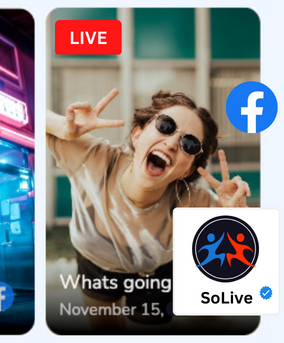Guide to Embedding Webinars on Your Website for Maximum Impact

The dawn of the digital era has revolutionized communication methods and techniques. One such ground-breaking innovation is webinars. What are they, you ask? Well, webinars are interactive online seminars that people can attend from the comfort of their homes or offices. Now, let's delve into why and how you can embed them on your website for maximum impact.
Introduction to Webinars
Webinars, essentially online seminars, are a potent tool for sharing knowledge, promoting products, or even fostering community interaction. They are cost-effective and reduce geographic barriers, enabling businesses and individuals to reach a global audience. Now, let's explore why you should consider embedding webinars on your website.
Why Embed Webinars on Your Website?
Increased Traffic
When you embed webinars on your website, you give your visitors more reasons to stay and explore. This can significantly boost your website traffic and decrease the bounce rate, a crucial SEO factor. Additionally, viewers can share your webinar links, leading to potential increases in organic traffic.
Increased Engagement
Webinars provide a unique, interactive platform where you can connect with your audience directly. When viewers interact with your webinar content on your website, they are more likely to be engaged and invested in what you offer. You can further amplify this engagement by integrating social media live streaming, as detailed in this helpful article on our blog: Social Media Live Streaming: Benefits and Ways to Do It.
SEO Benefits
Webinars can enhance your SEO strategy by improving the quality and diversity of content on your website. They can lead to higher average time spent on your site, better user engagement, and, when properly optimized, more keyword ranking opportunities. Read more about video content and SEO in this article: Video Content: Improving Your SEO Ranking in 2023.
How to Embed Webinars
Embedding webinars is a multi-step process that starts with choosing the right webinar platform and ends with correctly integrating the webinar into your website. Here's a more detailed look into this process.
Choosing the Right Webinar Platform
The first step is to choose a webinar platform that aligns with your needs. The platform you select should have a perfect blend of cost-effectiveness, comprehensive features, and simplicity. Different platforms come with various advantages and drawbacks, so your goals and target audience should guide your decision.
Platforms like Zoom and Webex offer robust webinar features and excellent connectivity, which is crucial for large-scale webinars. However, they may be more expensive than alternatives like Google Meet or Microsoft Teams, which provide ample features for small to mid-sized webinars.
Other elements to consider include audience interaction capabilities, customer support, ease of use, and integration with other tools you use. For example, some platforms may allow real-time chat or Q&A during the webinar, enhancing audience engagement.
The Embedding Process
After choosing your platform and creating your webinar, the next step is embedding it into your website. This process involves obtaining an 'embed code' from your platform and pasting it into your site's HTML.
Most platforms generate an embed code for your webinar, which is a small piece of HTML code. This code, when inserted into your website's backend, allows the webinar to be displayed on your site.
Here's a simplified version of the steps:
- Find the 'Share' or 'Embed' option on your chosen platform. It's usually located somewhere around the video player.
- Click on it, and select 'Embed.' You'll be provided with a piece of HTML code.
- Copy this code, then head to the backend of your website where you want the webinar to appear.
- Find the place in the HTML where you want the webinar to go, and paste the code there.
- Save your changes and refresh your website to see the embedded webinar.
Remember that the specifics of this process may vary from platform to platform, and you might need to check the platform's help or support section for detailed instructions.
Embedding webinars on your website can be a game-changer for your content strategy, and following these steps can help ensure you're doing it effectively. For more details on the technical aspects of embedding videos on websites, refer to our blog post: 5 Essential Tools for Managing and Embedding Videos on Your Website.
Best Practices for Embedding Webinars
When embedding webinars on your website, merely placing the content isn't enough. It's essential to follow some best practices to ensure your webinars make the most significant possible impact.
Selecting the Right Position
Choosing the correct position for your webinar on your website plays a pivotal role in maximizing its visibility. If the webinar is not easily noticeable, it might lead to lower interaction rates. Placing it on the homepage, blog posts, or a dedicated webinar section can help increase visibility.
The key here is to make the webinar as natural and integral to the page as possible. Avoid intrusive placements that disrupt the user experience. Remember, it's about engaging your audience, not overwhelming them.
Promoting Webinars on Other Platforms
A successful webinar requires promotion to reach a wider audience. Cross-promoting your webinars on different channels can significantly increase their reach and viewership.
Social media platforms, for instance, offer a great avenue to announce upcoming webinars, share snippets, and even broadcast them live. Tools like Facebook Live and Instagram Live can be instrumental in this. Check out this blog post on how you can leverage Instagram Live for personal and business branding: Leveraging Instagram Live for Personal and Business Branding.
Email marketing is another excellent channel for promotion. You can send personalized invitations to your subscribers, reminding them about the upcoming webinars and providing them with a direct link to the webinar page on your website.
Ensuring Accessibility
Accessibility is vital in making your webinar reach a wider and more diverse audience. Closed captions and video transcriptions not only benefit those with hearing impairments but also those who prefer reading or cannot play the video with sound in certain situations.
Transcriptions also play a critical role in SEO, as they can be crawled by search engines, potentially increasing your website's organic traffic. You can learn more about this from our blog post: The Importance of Video Transcription for SEO and Accessibility.
The Power of User-Generated Content
Don't underestimate the power of user-generated content. Encourage viewers to share snippets of your webinar or their learnings from it. This not only creates a sense of community but also aids in promoting your webinar to a broader audience. Read more about the power of user-generated video content in this article: The Power of User-Generated Video Content for Brands.
Tracking Performance and Engagement
Once you've embedded your webinars, it's crucial to track performance and engagement. Understand who your viewers are, how they interact with your webinar, and what content they find most engaging. You can use video analytics to gather these insights and adjust your strategy accordingly. Check out this article on our blog to learn more about video analytics: Using Video Analytics to Improve Your Social Media Video Content.
Conclusion
Embedding webinars on your website can significantly boost your site's traffic, engagement, and SEO ranking. However, it requires careful planning and execution. From choosing the right platform to promoting and tracking your webinars, every step counts towards achieving maximum impact.
FAQs
Why should I embed webinars on my website?
Embedding webinars on your website can increase traffic, engagement, and improve SEO ranking. It also provides your audience with valuable, interactive content right on your site.
How do I choose the right platform for my webinars?
Consider your goals, audience, and budget. Look for features that are important to your webinar such as ease of use, interaction capabilities, and technical support.
What are the best practices for embedding webinars on my website?
Some best practices include choosing the right position on your webpage, promoting your webinars on other platforms, and ensuring accessibility by providing video transcriptions.
What is user-generated content and how can it help my webinars?
User-generated content is any content—like posts, reviews, and videos—that is created by users rather than the company. It can help promote your webinars as users share their experiences, extending your reach to their networks.
How can I track the performance and engagement of my webinars?
You can use video analytics to understand who your viewers are, how they interact with your webinar, and what content they find most engaging.
FYI: You can embed Facebook Live automatically with the EmbedVidio platform. Start a free trial and display your social media video widgets now.

Embed live video feeds on your website automatically!
Try EmbedVidio and automatically add Facebook, YouTube, and Twitch live video feeds to your website.
All features included with every plan